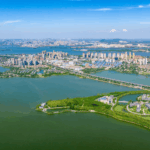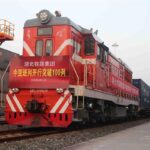This year marks the 80th anniversary of the victory of the Chinese people in the War of Resistance Against Japan. In recent days, people have been visiting memorial halls, revolutionary sites, and other red education bases, attending thematic exhibitions, listening to heroic stories, and revisiting that monumental history of the war to draw strength for progress.
At the Central Revolutionary Base Memorial Hall in Ruijin, Jiangxi, a steady stream of citizens has come to visit. The “Declaration of War Against Japan,” published in the April 1932 issue of “Red China,” has attracted many viewers who pause to observe.
In Huai’an, Jiangsu, the New Fourth Army Liu Laozhuang Company Memorial Park has launched immersive classroom activities to commemorate the martyrs. People explore the former battle trenches, experience the battlefield scenes, and deeply reflect on the spirit of the martyrs who feared no sacrifice and fought tenaciously.
During this period, a series of thematic exhibitions have been launched across various regions. The “Eternal Mountains and Rivers—Revolutionary Cultural Relics Exhibition of the Shanxi-Hebei-Shandong-Henan Anti-Japanese Base” has opened simultaneously at cultural and museum venues in Shanxi, Hebei, Shandong, and Henan provinces, featuring over 1,000 revolutionary cultural relics that recreate the great journey of the Communist Party of China in commanding the resistance behind enemy lines and launching strategic counteroffensives in North China. The Modern History Exhibition of Jilin Province has opened in Changchun, with more than half of the over 1,000 physical exhibits making their public debut for the first time. Several precious cultural relics related to the Northeast Anti-Japanese United Army have drawn significant attention. Descendants of multiple anti-Japanese martyrs, including Yang Jingyu and Zhao Yiman, also attended the event, revisiting history with the audience and drawing inspiration for progress.





